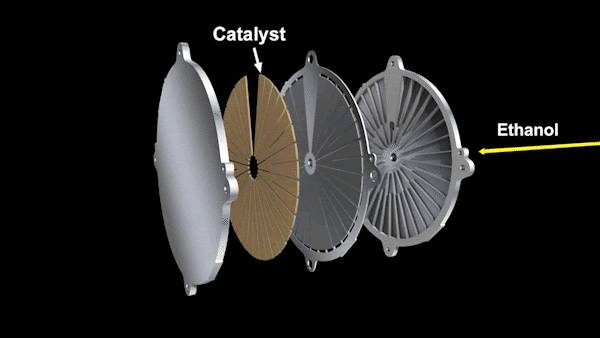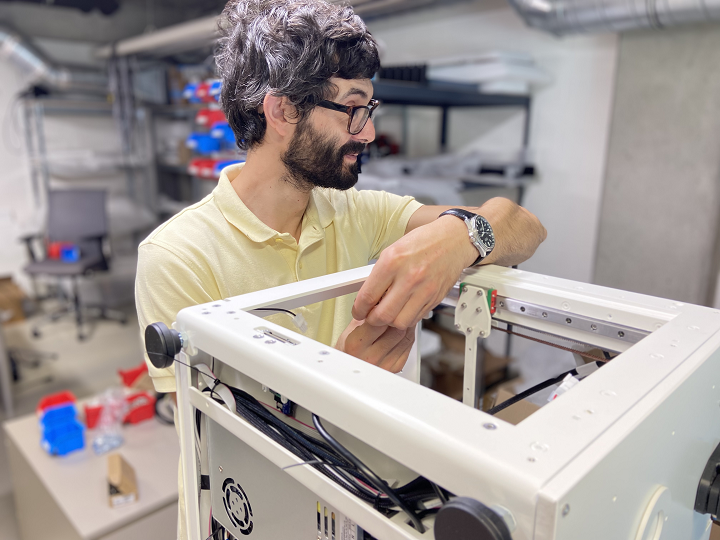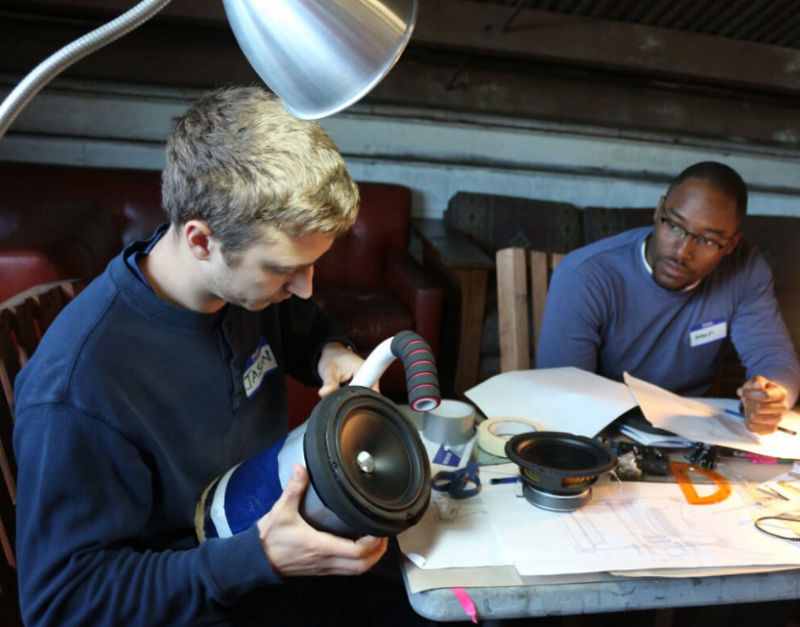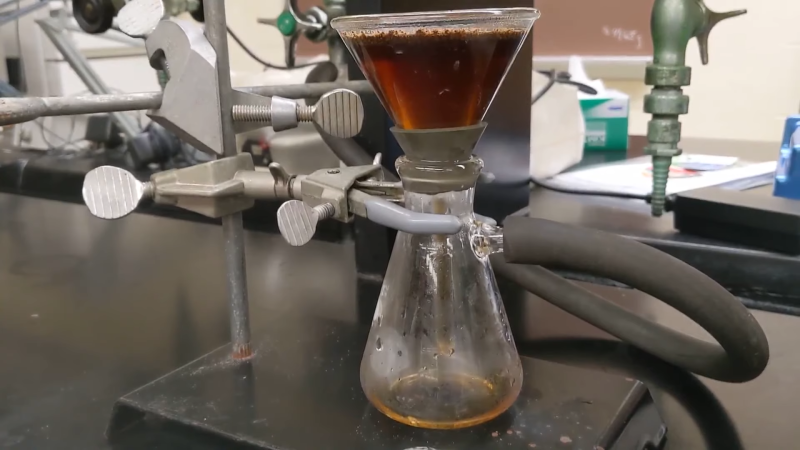We’re starting off with event and business news in today’s 3D Printing News Briefs, as formnext has a couple of event announcements and Anisoprint launched a new production facility in Luxembourg. Moving on, an engineering non-profit received a Cool Idea Award from Protolabs, and a collaborative team of research partners is scaling up a process for converting alcohol sourced from renewable or industrial waste gases into jet or diesel fuel. Finally, Hackaday posted a cool project about filtering coffee through 3D printed glass.
Formnext 2021 Holding Physical Event, Formnext Tokyo Postponed
As we get closer to the official AM industry event season, Mesago Messe Frankfurt and the Formnext Team have announced that formnext 2021 will be taking place as a physical, on-site event in Germany, November 16-19, with roughly 450 exhibitors already confirmed. Preparations have begun in earnest, and highlights will included presentations from the partner country Italy, talks by industry experts, the purmundus Challenge innovations, TCT Conference and Stage, and more. After last year’s event was transformed to a digital one, you can imagine that the overall AM community is thrilled by this news, and for those who may still not be comfortable with large in-person gatherings or are facing travel restrictions, the physical event will be complemented with Formnext Digital Days from November 30-December 1st.
“In discussions with members of the community over the last couple of years, we have once again come to realize the significance of Formnext,” said Sascha F. Wenzler, Vice President of Formnext at Mesago Messe Frankfurt GmbH. “This fair has an exuberance and spirit of innovation that is unbeatable. Just knowing that we can again offer this type of creative space where people can talk face-to-face, enjoy productive chats over coffee, touch products and discuss their progress embraced by the support of the whole community is wonderful.”
On the flip side, Messe Frankfurt Japan Ltd, has made the decision to postpone Formnext Forum Tokyo, due to health and safety concerns. The event, which was originally to be held next month, will now take place in September of 2022.
Anisoprint Launches Production in the EU
Continuous fiber 3D printer manufacturer Anisoprint announced that, nearly three years since it established headquarters in the EU, it shifted production to Luxembourg, and has now earned the label “Made in Luxembourg” from the Chamber of Commerce for complying with its standards. The company previously relied on contract manufacturing, but found it too difficult during the pandemic in terms of deadlines and quality control management, which is why it decided to organize production in Luxembourg, close to headquarters. All of the inspections by the Chamber are now complete, and Anisoprint has begun shipping its first printers with the “Made in Luxembourg” label to customers.
“Since the first launch of our products back in 2018, we constantly looked for an ideal manufacturing solution, trying to balance between the quality, customer proximity, logistics and lead times, predictability, cost. With the recent COVID- 19 outbreak that disrupted all the supply chains, contract manufacturing did not seem to be the best option anymore. We had to take many more production steps under control to manage the quality and lead time expectations of our customers and partners,” said Fedor Antonov, the CEO of Anisoprint. “After a careful consideration of every option and location, we have made a decision to set up our own production facility in Luxembourg, next to our head office. We have been working on that move since last year and today we are proud to receive a “Made in Luxembourg” label for the first batch of Composer 3D-printers manufactured in our new facilities.”
Non-Profit Empowering Youth Receives Cool Idea Award
Protolabs (NYSE: PRLB) has selected non-profit organization The BOOM as the latest recipient of its Cool Idea Award, a manufacturing grant that helps speed development of innovative products. The BOOM helps at-risk youth in San Francisco’s Bayview neighborhood work to achieve a brighter future by teaching them engineering and entrepreneurial skills. In the program, participants learn to build a retro boombox and bring it to market, and gain experience so later on they can develop their own product ideas. Protolabs partnered with the organization to build a part that holds battery cells together in order to make a pack that powers the boombox. The unique part makes the pack expandable, and features a spacer-nut, 3D printed out of nylon with HP’s Multi Jet Fusion technology.
“It is exciting to have an opportunity to use our expertise to help a not-for-profit that’s doing such important work in its community. The BOOM’s efforts provide the kinds of experiences kids need to learn about business, technology, and manufacturing in order to grow both creatively and practically,” said Robert Bodor, President and CEO of Protolabs.
Converting Alcohol from Renewable Waste Gas into Fuel

Watch how a PNNL-patented catalyst, combined with a 3D printed microchannel reactor, can convert ethanol to a useful chemical with multiple commercial uses, including jet fuel. (Video by Eric Francavilla; Animation by Mike Perkins | Pacific Northwest National Laboratory)
Research partners at Oregon State University and LanzaTech, which developed a carbon recycling technology, are working at the US Department of Energy’s Pacific Northwest National Laboratory (PNNL) to scale up a patented process for converting alcohol that’s sourced from renewable or industrial waste gases into diesel and jet fuel. In a nutshell, the PNNL-patented catalyst, when combined with a 3D printed microchannel reactor, can convert ethanol into a useful “platform” chemical called n-butene that has several commercial uses. This is a one-step chemical conversion, so it streamlines the current multi-step process and makes it more efficient, as well as more cost-effective, and it’s also more sustainable as well. Also, by using 3D printing, the team can create a pleated honeycomb of smaller reactors that will increase the surface-area-to-volume ratio that’s available for the reaction itself.
“The ability to use new multi-material additive manufacturing technologies to combine the manufacturing of microchannels with high-surface-area catalyst supports in one process step, has the potential to significantly reduce the costs of these reactors. We are excited to be partners with PNNL and LanzaTech in this endeavor,” said Brian Paul, lead Oregon State researcher.
The team published an initial research study in ACS Catalysis, and later on published a follow-up study with more information.
Making Coffee with 3D Printed Glass
Finally, a maker called Ahron Wayne has been working on 3D printing special impregnated filaments, filled with alternative materials, and created a prototype print for an experiment that Hackaday found pretty interesting. 3D printing isn’t all UV-cured resins and melted plastics, and Wayne was specifically focused on a glass-impregnated filament that The Virtual Foundry has been developing. This filament is full of very small glass particles, and the idea is that it can be 3D printed just like a regular plastic filament like PLA. After, it’s heated in a debinding process, in which the plastic is removed, and a sintering process heats the print again to bond together the glass particles that are left. Wayne decided to use this 3D printed glass and filter coffee through it, which, while not the most efficient way to make a cup of Joe, did at least work.
“It’s a complex process, and one that leads to some shrinkage in dimensions as well as porosity in the final part. However, where some might see failure, [Ahron] saw opportunity,” Hackaday writer Lewin Day explained. “The porous printed part was used to filter coffee, with the aid of a little vacuum from what sounds like a water venturi.”
Subscribe to Our Email Newsletter
Stay up-to-date on all the latest news from the 3D printing industry and receive information and offers from third party vendors.
You May Also Like
3D Printed Heat Spreader Could Improve Efficiency of Electronics
The low-hanging fruit for decarbonization has long been improving the efficiency of existing systems, hence the justification for LED lights and ENERGY STAR certified appliances. While such minor moves are...
3D Printing News Unpeeled: Marine Gearboxes, 3D Printed Motors and $1.7 Million in Seed Funding
UK based Equipmake just released their Ampere-220 e-axle system. The system, which is meant for high performance electric cars, was similar to one released on the Ariel HIPERCAR. It has...
CEAD Unveils 36-Meter-Long 3D Printer for Abu Dhabi’s Al Seer Marine
CEAD, a Dutch original equipment manufacturer dedicated to large-format 3D printers, has unveiled what it claims to be the world’s largest robotic arm-based 3D printer. At 36 meters long and...
3D Printed Biocomposites Could Help Reduce Marine Plastic Pollution
Concerns about the impact of plastic litter and microplastics in the oceans are at the forefront of environmental study. For decades, the marine environment has suffered from the degradation of...








































